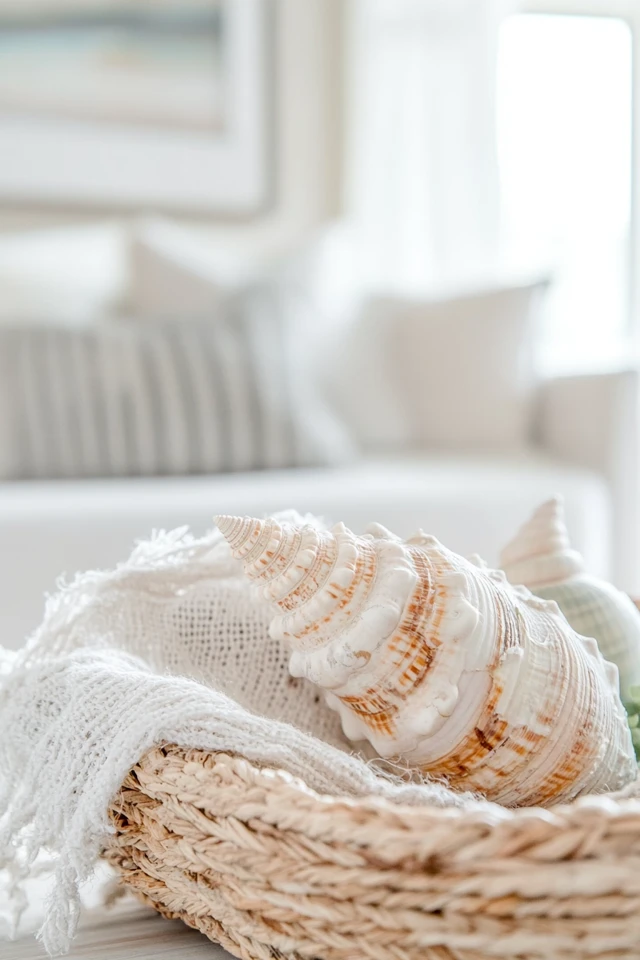Introduction
There’s something inherently soothing about the coast—the gentle sound of waves, the salty breeze, and the endless shades of blue. But you don’t have to live by the ocean to bring that same calming energy into your home. I discovered this when I styled my own living room with a coastal retreat vibe. I was craving a space that felt light, airy, and relaxing, like a weekend escape to the beach. By incorporating natural textures, soft hues, and coastal-inspired decor, I transformed my space into a peaceful oasis that made me feel like I was on vacation, even on the busiest days.
Creating a coastal retreat at home isn’t about loading your space with seashells or nautical themes. Instead, it’s about capturing the essence of the coast: simplicity, tranquility, and a connection to nature. Whether you’re styling a small nook or your entire home, these tips will help you design a serene, seaside-inspired escape.
Why a Coastal Retreat?
Key Benefits
- Promotes Relaxation: Coastal aesthetics are synonymous with calm and peace.
- Brightens Spaces: Light colors and natural textures make rooms feel airy and open.
- Timeless Appeal: Coastal design is classic and never goes out of style.
- Versatility: It works in any home, whether you’re near the beach or far inland.
1. Embrace a Coastal Color Palette
Why It Works
Coastal colors evoke the sea and sky, instantly creating a light and refreshing ambiance.
How to Do It
- Use soft blues, crisp whites, and sandy beiges as your base colors.
- Add accents of seafoam green, driftwood gray, or navy blue for depth.
- Stick to a neutral backdrop for walls and larger furniture, then layer in color with textiles and decor.
- Avoid overly bold or saturated colors to maintain a calming effect.
2. Incorporate Natural Textures
Why It Works
Natural materials bring warmth and a tactile element that mimics the beauty of the coast.
How to Do It
- Add woven rattan or wicker furniture for a beachy, organic feel.
- Use jute or sisal rugs to ground the space and provide texture underfoot.
- Incorporate wooden accents, like a driftwood coffee table or reclaimed wood shelves.
- Choose light, natural fabrics like linen or cotton for curtains, throws, and pillow covers.
3. Let in Plenty of Natural Light
Why It Works
Bright, airy spaces are a hallmark of coastal design and enhance the tranquil vibe.
How to Do It
- Use sheer, lightweight curtains to let sunlight filter in while maintaining privacy.
- Keep windows uncluttered and opt for light-colored window treatments.
- Add mirrors strategically to reflect light and make the space feel larger.
- Arrange furniture to maximize views and draw attention to natural light sources.
4. Choose Relaxed, Comfortable Furniture
Why It Works
Casual, cozy furniture enhances the laid-back feel of a coastal retreat.
How to Do It
- Opt for slipcovered sofas or chairs in neutral or light-colored fabrics.
- Incorporate oversized, plush cushions for a sink-in feel.
- Use distressed or weathered wood finishes for tables and chairs.
- Mix in wicker or bamboo accent chairs for a breezy, tropical touch.
5. Add Ocean-Inspired Art and Decor
Why It Works
Subtle coastal-themed accents evoke the beach without feeling cliché.
How to Do It
- Hang abstract art or photography of the ocean, beaches, or coastal landscapes.
- Incorporate decor like glass vases filled with sand or shells, but keep it minimal.
- Use rope, driftwood, or coral-inspired accents to add texture and character.
- Display items in shades of blue and white, like pottery or decorative bowls.
6. Layer Soft Textiles
Why It Works
Cozy layers add warmth and comfort while maintaining a relaxed, beachy vibe.
How to Do It
- Use lightweight throws in neutral tones or subtle patterns, like stripes or waves.
- Add pillows in soft, natural fabrics, with prints inspired by the coast (like coral or seaweed patterns).
- Layer area rugs, such as a jute base rug with a softer, patterned one on top.
- Include breezy, breathable fabrics like linen bedding for an effortlessly coastal feel.
7. Incorporate Coastal Greenery
Why It Works
Greenery brings life to your space and mimics the lush vegetation found near the coast.
How to Do It
- Use plants like snake plants, ferns, or palms for a tropical touch.
- Add driftwood planters or ceramic pots in natural tones.
- Arrange succulents or air plants in glass terrariums for an oceanic feel.
- Group greenery in varying heights to create depth and interest.
8. Focus on Soft, Ambient Lighting
Why It Works
Warm, subtle lighting enhances the cozy and serene atmosphere of a coastal retreat.
How to Do It
- Use pendant lights with woven or rattan shades for a casual, beach-inspired look.
- Add table lamps or floor lamps with fabric or glass shades for soft lighting.
- Incorporate candles or lanterns for a flickering, intimate glow.
- Opt for warm-toned LED bulbs to create a relaxing, golden light.
9. Minimize Clutter
Why It Works
A clean, uncluttered space enhances the sense of calm and openness.
How to Do It
- Use hidden storage solutions, like baskets or ottomans with compartments, to keep items out of sight.
- Limit decor to a few carefully chosen pieces that complement the theme.
- Regularly declutter surfaces like tables and shelves to maintain an airy look.
- Keep the space functional yet simple—less is more in coastal design.
10. Bring in Subtle Nautical Touches
Why It Works
Nautical elements add character and charm while staying true to the coastal theme.
How to Do It
- Use striped textiles, like rugs or throw pillows, to evoke the classic sailor aesthetic.
- Incorporate rope details, such as on mirrors, handles, or curtain ties.
- Add vintage maritime decor, like a weathered ship wheel or anchor, but use sparingly.
- Include navy blue accents paired with crisp white for a timeless nautical look.
Picture Gallery
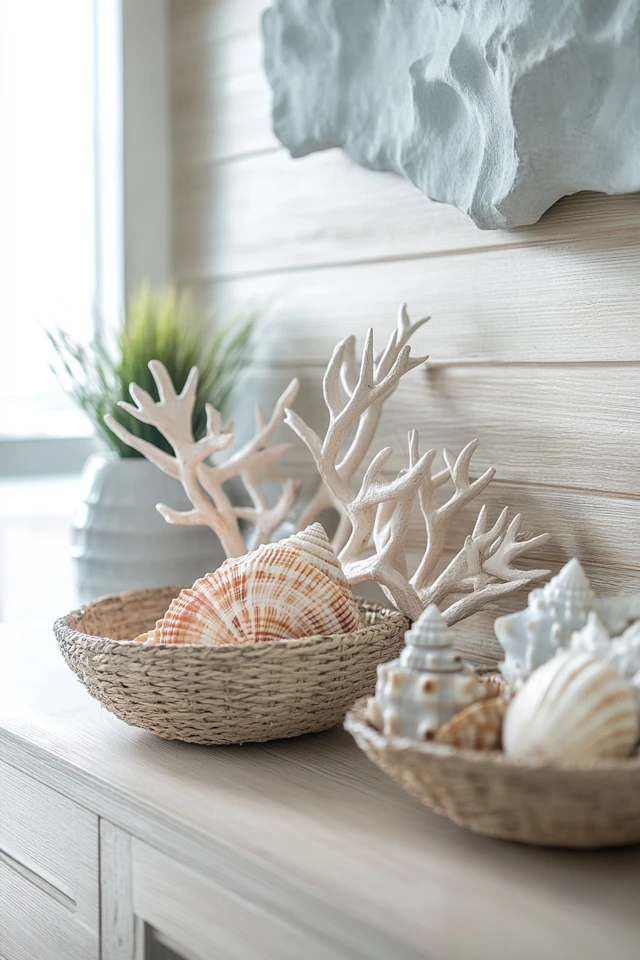

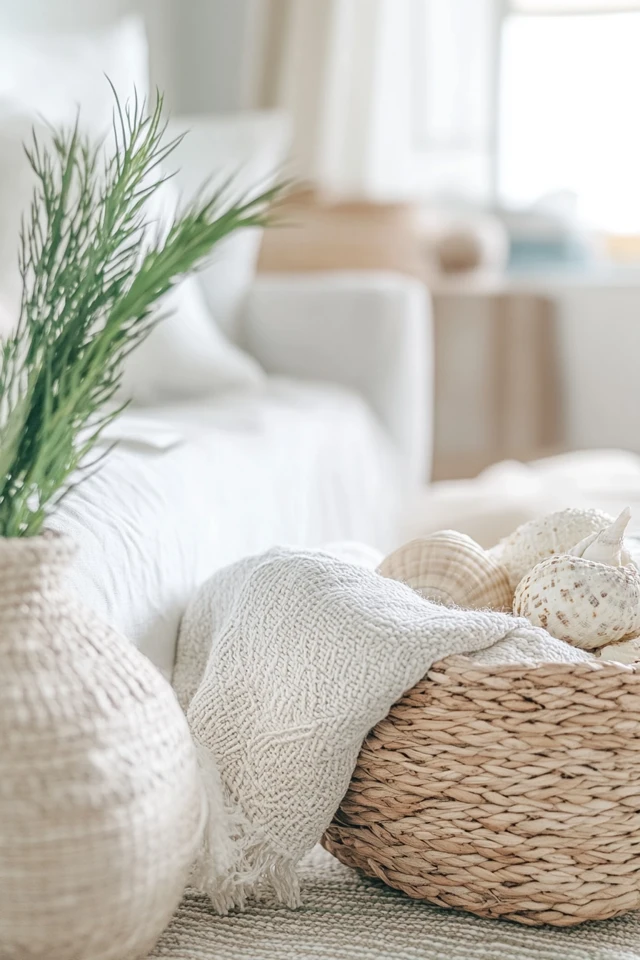
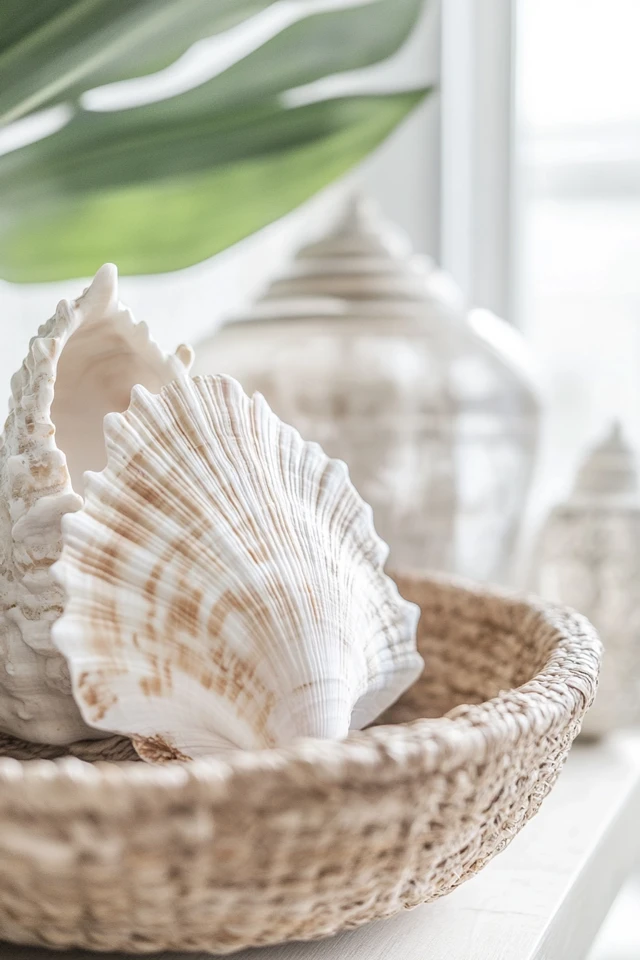
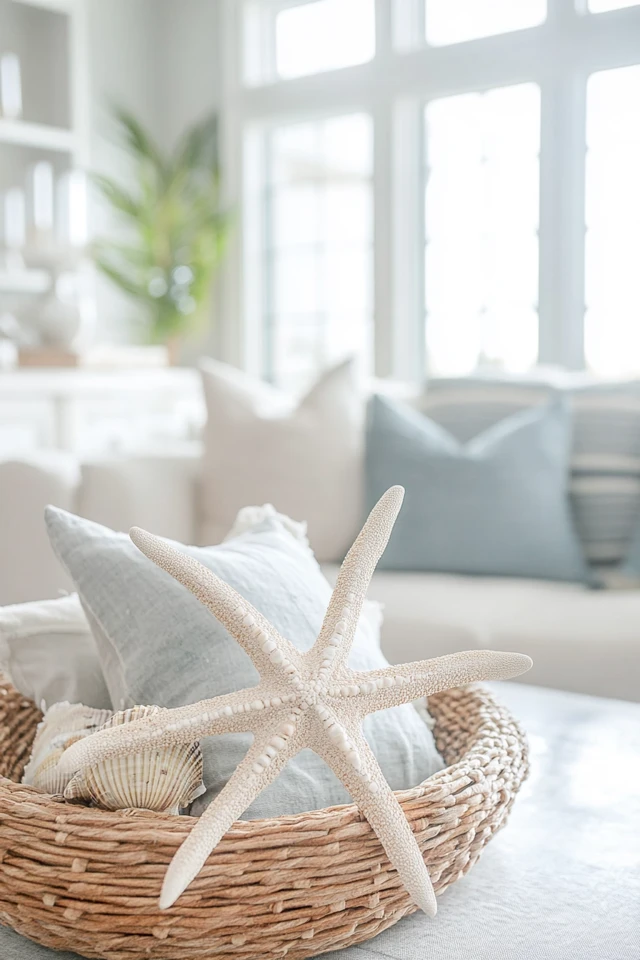
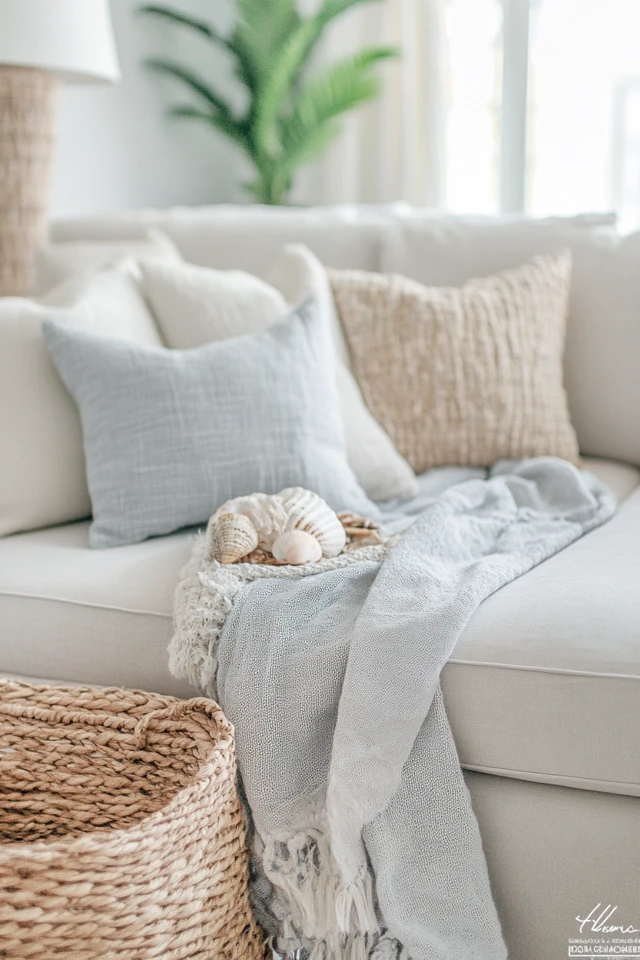
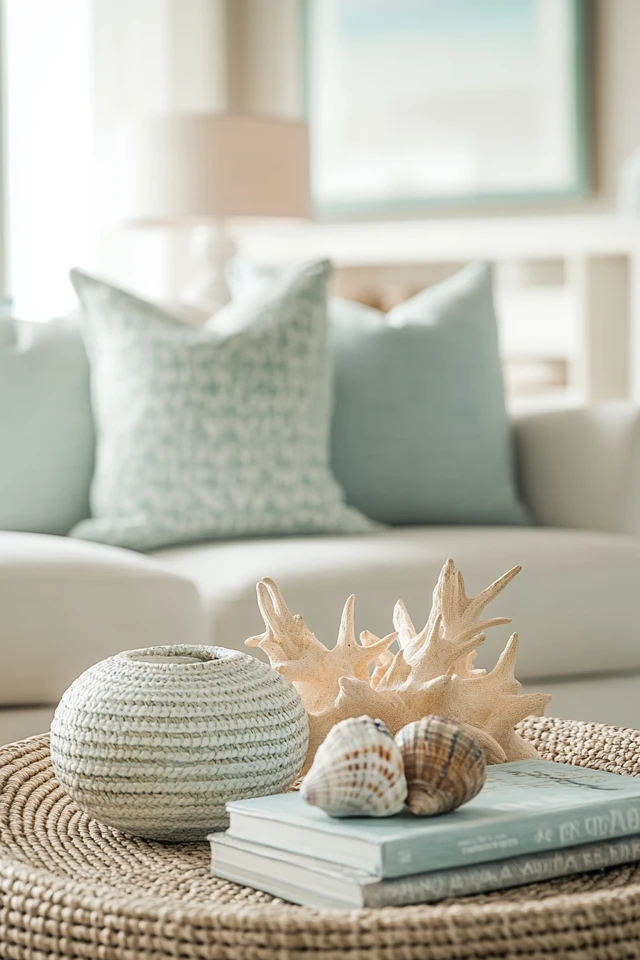
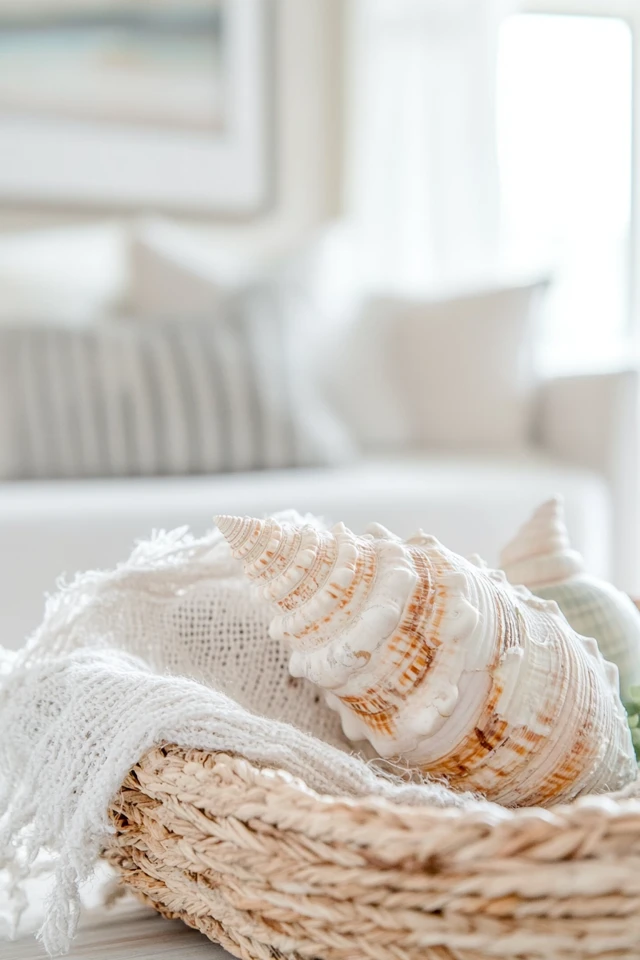
Conclusion
Creating a relaxing coastal retreat in your home is about more than just decor—it’s about crafting a space that feels serene, breezy, and connected to nature. By embracing soft colors, natural materials, and ocean-inspired accents, you can bring the tranquility of the coast into any room, no matter where you live.
What I love most about this style is how versatile and timeless it is. Whether you’re sprucing up a small apartment or revamping an entire house, coastal design has a way of making your space feel brighter, calmer, and more inviting. So, grab your favorite throw, light a candle, and let your new retreat transport you to the shores of relaxation.
FAQ
What colors are best for a coastal retreat?
Soft blues, whites, sandy beiges, and seafoam greens are perfect for creating a coastal vibe. These colors mimic the natural beauty of the beach and ocean.
How can I achieve a coastal look without it feeling too themed?
Focus on textures, natural materials, and subtle ocean-inspired accents rather than overt nautical decor. Keep it simple and elegant.
Can I create a coastal vibe in a small space?
Absolutely! Use light colors to open up the room, incorporate mirrors to reflect light, and add compact natural elements like small plants or woven baskets.
What are some affordable ways to bring in coastal decor?
Look for thrifted or DIY items, like driftwood, jars of sand and shells, or simple striped textiles. Woven baskets and jute rugs are also budget-friendly options.
Is coastal design suitable for all seasons?
Yes! Coastal design’s neutral colors and natural materials are versatile, making your space feel fresh and calming year-round.

